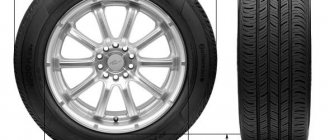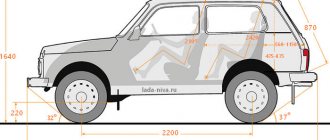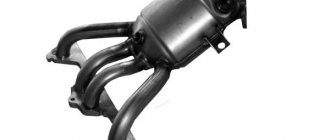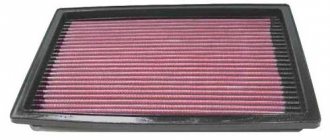The design of the exhaust gas exhaust system of absolutely all modern cars requires the presence of a catalytic converter (catalyst). This is a prerequisite for complying with environmental regulations.
VAZ-2170 is no exception. Its exhaust system is also equipped with a catalytic converter. This is what we will talk about in this article. We will look at how the catalyst (Lada-Priora) works, and also talk about the problems that arise when it malfunctions. In addition, we will try to figure out alternative devices used to replace it.
Design Features
How does the catalyst work? "Priora" in terms of its design is no different from other modern cars. The part consists of a steel body (can) and a working element - metal honeycombs, the surface of which is coated with an active substance that promotes heating of the exhaust. The latter is a platinum-iridium alloy.
Unburned harmful impurities, passing through the honeycomb of the device, settle on the surface of the catalytic layer and, under the influence of high temperature, continue to burn, oxidizing almost completely. As a result, at the output we have an exhaust with a minimum amount of harmful substances.
Signs of a bad catalytic converter
The declared service life of the VAZ-2170 catalyst is 140 thousand kilometers. However, this does not mean that after this mileage the device needs to be changed. It can last much longer, or it can fail even after traveling 10 thousand km. It all depends on how you use the car.
How do you know when it's time to change the catalyst? "Priora", being a car stuffed with various sensors, will first of all let you know about this by a burning CHECK light on the dashboard (when reading the code, error 0420). Failure of the catalytic converter is also accompanied by:
- difficult (long) process of starting the engine;
- reduction in power characteristics;
- increased fuel consumption;
- floating speed at idle;
- uncharacteristic sounds of a running engine;
- pungent (acrid) smell of exhaust gases.
Fuel consumption
After you have removed this filter, many are tormented by the question of fuel consumption - will it increase or not? Of course, he will fall (so I think), no matter what anyone says. Let's think logically - if there is this filter element, it represents an obstacle that the exhaust gases need to overcome, and accordingly the engine will spend more effort to push them through (consumption increases slightly). If this element is NOT present, then the “working out” will be much easier - fuel will be saved.
Start with the sensor
If you notice the above signs, do not despair immediately. A faulty oxygen sensor (lambda probe) may also be to blame for the fact that the car has lost its former agility. By the way, Priora has two of them: control and diagnostic. The first is designed to determine the amount of oxygen in the exhaust gases, and the second is to promptly inform the driver about a possible malfunction of the first device.
Often these sensors are called by other people's names, for example, asking how many catalysts are in the Priora and which ones. This is fundamentally wrong. There is one catalyst, two sensors. Let's get back to them.
Considering that the diagnostic lambda probe rarely fails, check the catalyst control sensor first. In the event of a breakdown, the Priora will also notify you with a lit CHECK lamp. All that remains is to read the error code with the scanner and decipher it. If it turns out that there is a problem with the lambda probe, you are in luck.
Few state laws
According to world, European, and now Russian standards, the level of CO2 emissions into the atmosphere should not exceed the standards established by GOST for each type of engine.
For example, for gasoline engines GOST R 52033-2003 is provided, and for engines with diesel fuel GOST R 52160-2003. Simply put, motorists in our country now (since 2003) live according to Euro-3 standards, where the total mass of CO2 emissions should not exceed 2.3 gkm, and according to Euro-4 standards, where CO emissions up to 1.0 gkm are also not must be exceeded - otherwise there will be a fine, and in the future it will be impossible to undergo maintenance and obtain a diagnostic card that replaces inspection tickets. For these purposes, it is necessary to have a working catalyst in the exhaust system of any car. In addition, the new Euro-5 standards, for which there are no prerequisites in Russia yet, imply an even greater reduction in harmful emissions. After all of the above, it’s really worth considering how far you can go without problems and how long you’ll be driving. However, living and operating a car in Russia brings with it several troubles, the main one of which can immediately be called fuel quality. Only Russian high-quality fuel contains tetraethyl lead, which instantly destroys any catalysts.
How to check the catalyst
The catalytic converter can be checked in two ways: by visually inspecting it and by measuring the pressure inside the can. In the first case, the device is dismantled and a visual inspection is carried out. If the body of the device has traces of mechanical impact, and the honeycombs visible through the holes are melted, the catalyst is clearly faulty.
The pressure inside the device can is checked using a special pressure gauge screwed in instead of the control sensor. The engine is started, warmed up and brought to 3 thousand rpm. If the catalyst is working, the pressure should not rise above 0.3 kgf/cm2.
Replacing valves on VAZ 2170, 2171, 2172
Despite the difficulty of engine repair, valves can be replaced on the 16-valve Priora. To do this, you need to understand the structure of the internal combustion engine, stock up on the necessary spare parts and tools, and use this article as a guide.
Spare tools and parts:
- Wrenches for 8, 10, 13, 19 and 21.
- Valve spring remover.
- Valve seal remover.
- Screwdriver.
- Tweezers.
- Gasket between head and block.
- The valve
is installed.
Why does the catalyst fail?
The main malfunction of the catalytic converter is cell obstruction. Over time, their working layer burns out, and they themselves begin to melt, turning into a solid mass. This creates an obstacle to the free exit of exhaust gases, which is why, in fact, the engine “chokes.”
Premature failure of the catalyst can be caused by:
- use of low-quality fuel;
- oil getting into the fuel;
- irregularities in the ignition system.
We change the catalyst on a Priora with our own hands
To replace the VAZ-2170 catalytic converter, it is not necessary to go to a service station. This can be done in your own garage. For this you will need:
- a set of keys;
- head 13 with handle;
- pliers;
- slotted screwdriver.
Replacing the catalyst (Priora) is carried out as follows:
- We install the car on the inspection hole.
- Raise the hood and disconnect the negative terminal on the battery.
- Remove the decorative casing of the power unit.
- We go to the inspection hole. Unscrew (not completely) the lower nut of the clamp connecting the main and additional mufflers. Unscrew the top nut completely. Remove the clamp and remove the O-ring.
- Use pliers to bend the antennae of the catalyst's thermal protective shield.
- Unscrew the three nuts securing the exhaust pipe flange and the catalytic converter flange. Remove the locking plate.
- We lift the additional muffler up and remove its bracket from the front cushion of its suspension (rubber band).
- Disconnect the exhaust pipe of the additional muffler from the catalyst studs. Remove the sealing gasket.
- Disconnect the wiring harnesses from the connectors of the control and diagnostic oxygen sensors.
- Remove the sensor wire holders from the heat shield of the steering mechanism.
- Using a 13mm socket, unscrew the bolts securing the catalyst to the bracket.
- Unscrew the three nuts securing the steering heat shield. We dismantle the screen.
- Unscrew the two nuts of the water pump pipe bracket. Remove the bracket.
- We dismantle the catalyst by unscrewing the eight nuts securing it to the cylinder head. Remove the catalyst and sealing gasket.
- We install the new catalytic manifold in the reverse order.
Before installing the catalyst, be sure to check the condition of the gasket. If it is damaged, you will have to buy a new one. Under no circumstances should you install a torn gasket!
You should also check the flatness of the catalytic converter flange. This can be done by applying, for example, a metal ruler to it. Using a feeler gauge, measure the size of possible gaps. If they exceed 0.1 mm, we grind the flange surface.
Is there an alternative
Will Priora work without a catalyst? Of course it will be! The absence of a catalytic converter will not affect its performance in any way, as some “experienced” craftsmen claim. Yes, the car will no longer meet established environmental standards, but it will not work any worse.
If you don’t want to spend money on a standard catalyst, you can always buy a universal device, which will cost you half the price, taking into account installation. Essentially, it is the same catalytic converter with the same functions and similar design. And they are produced mainly in the same factories as the original ones, and their price is lower due to the absence of various trade markups.
Well, if you want to easily tune your Priora, buy a good flame arrester for it. It is installed instead of a catalyst. With it, the engine power will increase due to improved exhaust gas flow, and the sound of the power unit will acquire sporty notes.
Weighing all the pros and cons - making a decision
If the device is damaged to such an extent that it no longer performs its functions, the question arises: remove it completely, replace it with a new part, or find an alternative spare part. When cutting, you need to contact qualified specialists who will adjust the noise of the exhaust system, eliminate errors in the program and install protection against burnout of the exhaust pipe.
Replacing the catalyst with a flame arrester
Odor is difficult to eliminate. But the concentration of harmful substances in a car with a small engine volume is much lower than with a volume of 4–5 liters. If you are sensitive to it, you should choose to install a new device. To increase power, you can install a direct-flow exhaust pipe or use a sports converter.
In addition to removing the catalyst, other replacement options must be used.
A flame arrester is a common way to replace a catalytic converter. It is more economical, and a large range of models fits all types of engines. Another way to solve the problem is to install a mechanical blende, followed by installation of an RC filter.
If all necessary operating conditions are met, the catalyst will last quite a long time, and a device that is damaged and clogged with waste must be removed or replaced.
Video on the topic: Removing the catalyst - pros and cons
But many owners note that the Priora catalyst can lead to numerous problems with vehicle operation. Therefore, a practical solution would be to replace it with a flame arrester.
A few words about “spiders”
There is another option for tuning, which involves completely reworking the exhaust system. It is called “direct flow”. Its essence is to remove from the system all elements that prevent the free exit of exhaust gases, including the catalyst.
The main part of the forward flow is the insert (“spider”). This is an analogue of the exhaust manifold, differing from the latter by a special connection of pipes, in which the exhaust gases leaving the cylinders have practically no effect on subsequent exhausts.
Two types of spiders are installed on Priora: 4-1 and 4-2-1. The numbers indicate how the manifold pipes are connected. The catalyst insert (Priora) 4-1 provides for the connection of four pipes into one. In the “spider” 4-2-1, the collector pipes are first combined into a pair, and then converge into one.
It is believed that the optimal pipe connection for the VAZ-2170 is scheme 4-1, but the other is no worse. It is important that the fastening elements of all parts of the exhaust system match, because in addition to the insert, you will also need to purchase a resonator and a muffler.
Comments
Guests cannot leave comments on the site, please log in.
Products for LADA at the best price
A selection of accessories for LADA from AliExpress
Modern toxicity standards require the use of exhaust gas purification systems. For cars running on gasoline, such a device is a catalyst. Vehicle owners often encounter blockages and the need to clean this part. Purchasing and installing a new element is expensive, so the used part is simply removed. Removing the catalyst has its pros and cons; every driver needs to know them.
How to extend the life of a catalyst
Finally, check out the tips that will help you avoid returning to the topic of replacing the catalytic converter for a long time:
- Do not use low-quality gasoline. This solution will save not only the catalyst. “Priora” is not at all the kind of car into whose tank you can pour anything that burns.
- Do not allow oil to get into the fuel. If you notice that the exhaust has acquired a bluish tint, do not be lazy to check the compression in the cylinders. Parts of the piston group may wear out, causing oil to enter the cylinders.
- Pay attention to the dashboard. If the CHECK warning light comes on and the car has difficulty starting or has lost power, do not delay diagnostics.











